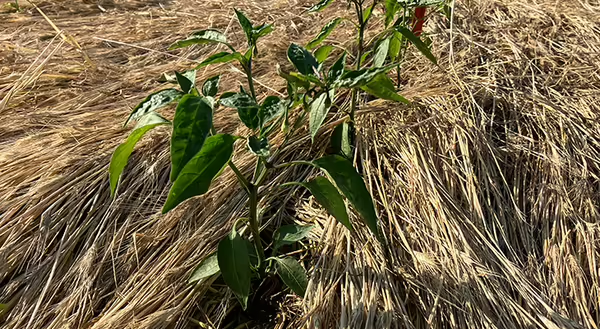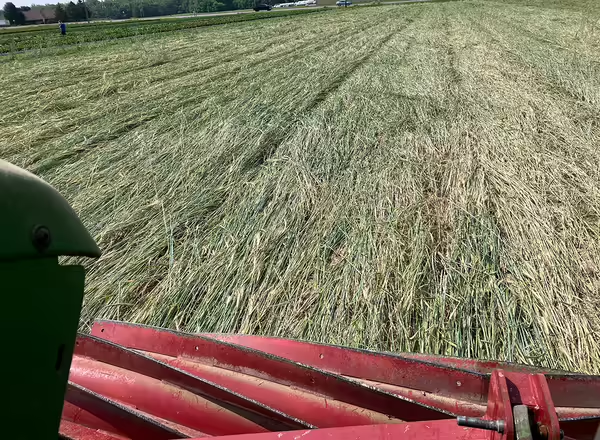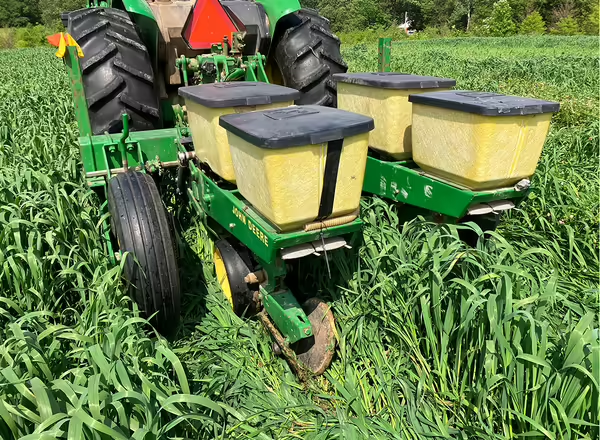
Spring cover crops are mainly now reaching their end. Many have been incorporated or terminated and either planted into or getting ready too.
This is year 2 of my no-till/cover crop tomatoes and peppers in a small garden type area. This is an extension of a research project from 2020-2021 with these practices. Transplants were hand set in this small area but a no-till transplanter could easily make quick work of larger areas. The rye was terminated with glyphosate which included Dual Magnum as a residual herbicide. Then the following day it was laid down and ready to plant.
Management Thoughts for the Month
What early crops do you have planted? Do you have any times after that crop you can fill in with a cover crop? Buckwheat is always a great short-term summer cover that can fill about 40 days before any seed formation. For more ideas on this or anything else cover crop related check out the Midwest Cover Crops Council Selector Tool to get some inspiration on some cover crops that might thrive in your area planted this spring and early summer.

I have roller-crimped the cereal rye field that will be planted for our Pumpkin Field Day trials. Although this will still get a herbicide for burndown and residual weed control, this pass will prevent having to make an added herbicide termination pass and leaves the rye laying down nicely, ready for planting.

Spring Cover Crop Experimenting – No-till Sweet Corn
I also made a second planting of sweet corn into the oat/pea cover crop. This was a bit tricky with the rainfall, mid-May, but I was able to capture some of the cover crop no-till benefits and the biomass helped to support field traffic. The soil moisture was ideal for no-till planting but it would have been too wet to prepare and plant in conventional tillage. It rained before I had a chance to spray a burn down but with the cover crop, I was able to get across the field two days after planting despite having had 2” of rain the day before. I feel succession planted crops like sweet corn have a real fit in no-till and cover crop systems as it can be easier, require fewer passes, and save time while being easier to navigate the weather and stay on target with planting dates.